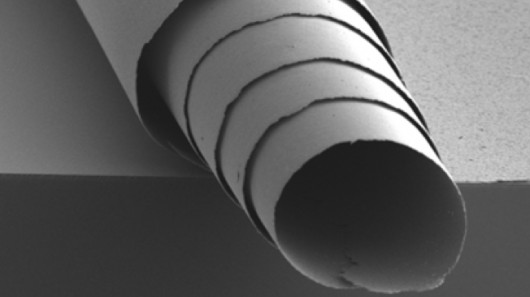
With its incredible strength, chemical stability, high thermal conductivity and low electrical resistance, it's no wonder that graphene is finding more and more uses. Soon, however, it may be facing some competition from molybdenum di-sulphide – a thin metallic film that can emit light.
Graphene consists of a one-atom-thick sheet of carbon atoms, arranged in a honeycomb pattern. Molybdenum di-sulphide (MoS2), on the other hand, is made from a mixture of molybdenum and sulphur.
It's a member of a family of materials known as transition metal di-chalcogenides, or TMDCs. These possess some of graphene's desirable qualities (such as mechanical strength and electrical conductivity), plus they can also emit light – this means that they could find use in things like photodetectors or light-emitting devices.
Unfortunately, it has previously proven difficult to produce TMDCs in forms any larger than flakes measuring only a few hundred square microns in area. Now, however, Dr. Kevin Huang from the University of Southampton has announced the fabrication of MoS2 films that are just a few atoms thick, but that have an area of over 1,000 square millimeters. What's more, they can reportedly be transferred to almost any substrate.
The films were produced using a chemical vapor deposition process, that Huang and his team have been exploring since 2001.
"Being able to manufacture sheets of MoS2 and related materials, rather than just microscopic flakes, as previously was the case, greatly expands their promise for nanoelectronic and optoelectronic applications," he said.

 Previous page
Previous page Back to top
Back to top







